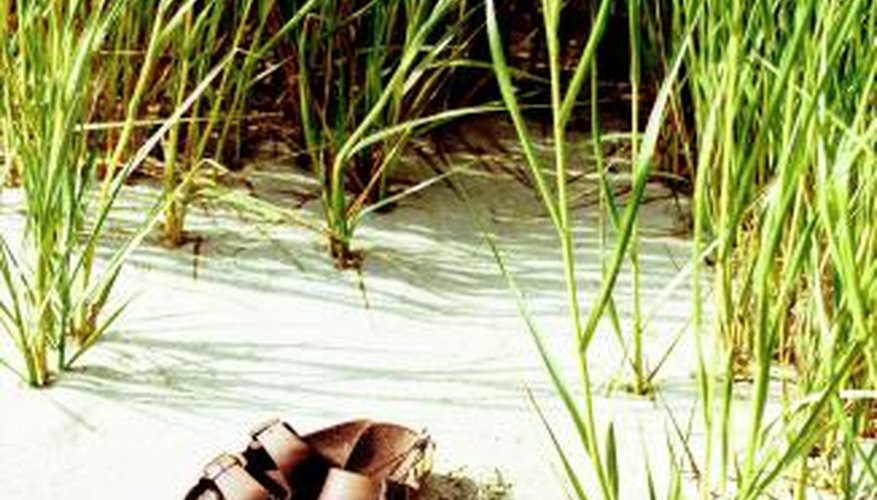Birkenstocks are cork-bottomed shoes that have a rubber sole on the bottom for grip and comfort. The rubber sole will wear out over time, necessitating the replacement and repair of the sole or the replacement of the entire shoe. Since it is easier (and less expensive) to repair the sole, many people choose that option. Repairing the rubber part of a Birkenstock is a quick, simple process, and the shoes will be ready to wear again the next day.
- Birkenstocks are cork-bottomed shoes that have a rubber sole on the bottom for grip and comfort.
- The rubber sole will wear out over time, necessitating the replacement and repair of the sole or the replacement of the entire shoe.
Inspect the bottom of the Birkenstock for signs of wear. Inspect the width of the remaining rubber sole. If less than 1/4 inch of the sole remains on any part of the sole, then the rubber should be replaced. If only the heel and toe rubbers are worn, then you can replace them with rubber toe taps.
Wash the rubber sole with mild soap and a soft bristle brush. Remove all dirt, oil and other gunk from the bottom of the shoe. Dry the sole with an old towel.
Apply a line of glue between cracks in the rubber sole that is thick enough to remain on the shoe. Apply glue to any loose rubber that does not need removal as well. Press the two pieces together for about one minute to allow the glue time to set.
- Wash the rubber sole with mild soap and a soft bristle brush.
- Apply a line of glue between cracks in the rubber sole that is thick enough to remain on the shoe.
Cut the areas of the rubber that you are removing very carefully with a utility knife. Make cuts as clean as possible. Gently pull the rubber sole away from the cork bottom of the shoe.
Sand the cork area of the shoe gently with sandpaper to remove any remaining adhesive and to roughen and even the surface of the cork for better adhesion. Dust any sandpaper away with a damp rag.
Place the heel and toe taps or the entire new shoe sole over the bottom of the shoe. Don't worry if the rubber is too large for the shoe at this point. You will remove excess rubber once the glue dries.
Apply a bead of silicone glue all around the area of the shoe where you will attach the new rubber piece. Spread the glue with a paint scraper. Press the rubber piece in place. Allow the glue to dry for about two hours.
- Sand the cork area of the shoe gently with sandpaper to remove any remaining adhesive and to roughen and even the surface of the cork for better adhesion.
- Apply a bead of silicone glue all around the area of the shoe where you will attach the new rubber piece.
Sand the edge of the rubber where it lines up with the original rubber piece to create an even surface. Cut any rubber that sticks out from the shoe with a utility knife.
